A History of Campus Computing at UNCG, 1967-1990

Petty Building, 1960, first location for the Administrative Computing Center

Dr. Roscoe J. Allen, Sr., first Director of the Administrative Computing Center
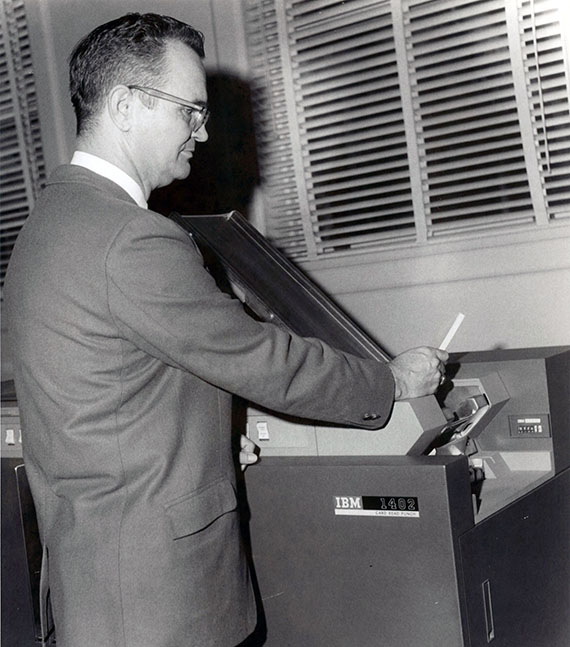
Dr. Roscoe J. Allen with one of the first on campus computers, the IMB 1402 Card Read Punch
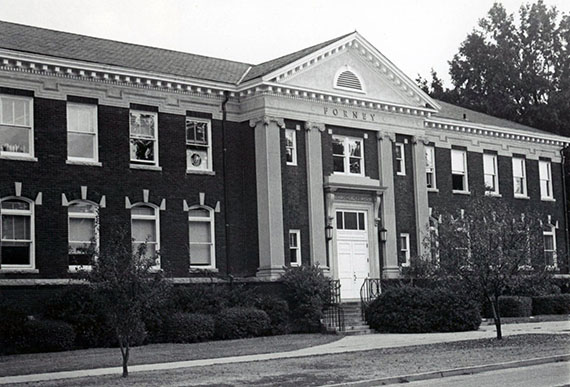
Forney Building, second location of the Administrative Computing Center from the mid-1970s-1980s
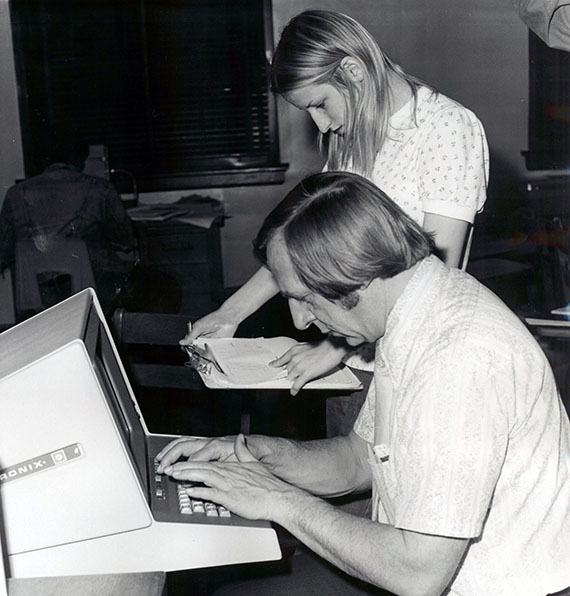
Founding Director of the Academic Computing Center, Dr. Joseph R. Denk, with student Donna Newman, 1974-1975
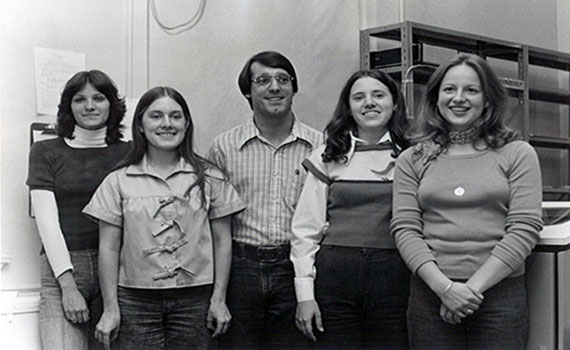
Academic Computing Center Consultants, from left to right, Donna Vaughn, Susan Kellenberger, Gene Bowman, Jan Phelps, Emily Russell, 1976
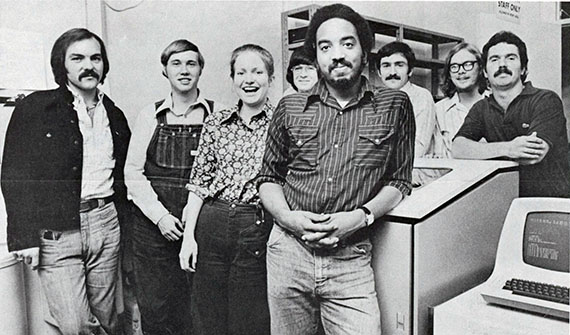
Academic Computing Center Attendants, from left to right, Randy Young, Eddie Hamblein, Nancy Mintz, Perry King, David Florance, Leon Mason, Dennis Funk, Phil Justice, 1976
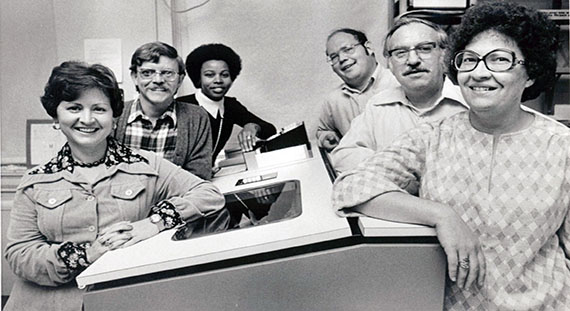
Academic Computing Center Staff, from left to right, Joretta Kepfer, Robert Lock, Brenda Caple, Hetra Mark VII, Carl Ballard, Theodore Hildebrant (Director), and Marlene Pratto, 1976
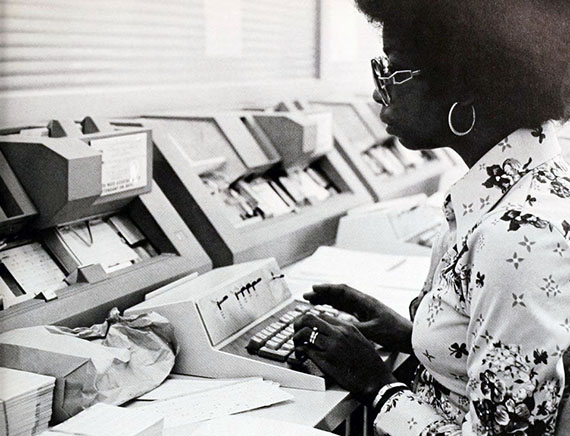
Student making punch cards, 1978
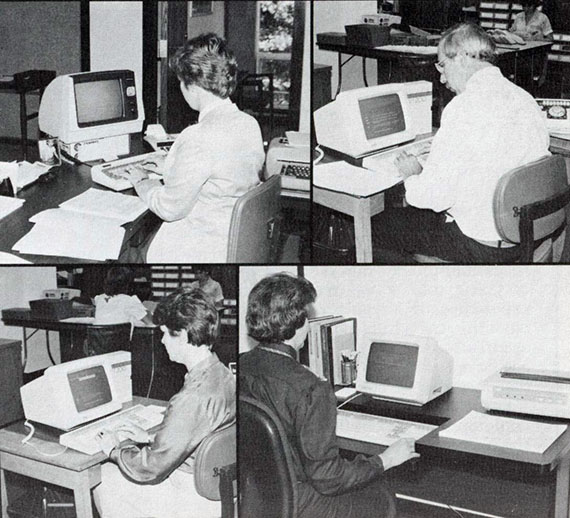
Administrative terminals, 1985
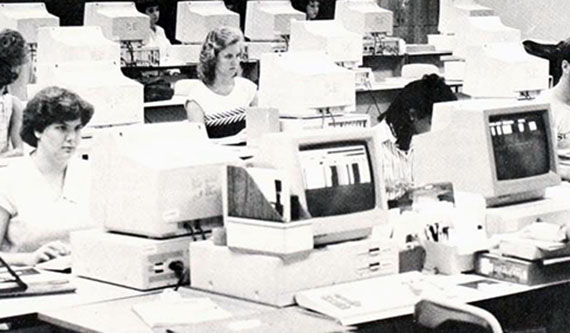
Student lab, 1989
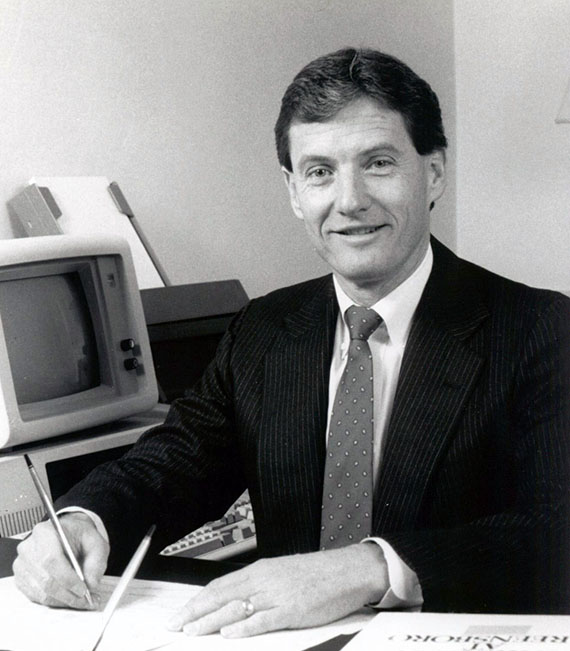
Richard (“Skip”) Moore, first Director of Computing and Information Systems
The Administrative Computer Center was established in the fall of 1967 as the first on campus computing center for The University of North Carolina at Greensboro. The center was located in the Petty Science Building and placed under the direction of Dr. Roscoe J. Allen, Sr. It was formed to serve the administrative staff as well as the academic and research needs of its faculty and students. The demands of the center were met by an IBM 1401 computer that utilized IBM cards. Soon after in 1971, a new computer was purchased, the RCA 70/35 Spectra, a disk operating system with 65k bytes of memory. The new computer helped campus administration manage admissions, registration, student billing, electronic transcripts, and payroll.
Due to an increased workload and growing demands on the facility, the Administrative Computer Center was reorganized in 1973 and split into the Academic Computer Center and the Administrative Computer Center. The administrators continued to use the existing campus computer, while faculty and students connected to the Triangle Universities Computation Center (TUCC) in Raleigh through a medium speed batch terminal connection.
The Administrative Computer Center remained under the direction of Roscoe Allen. With the division, the center stayed in the Petty Building and quarters were expanded to provide a reception area, Director’s office, and space for programming and systems staff. In 1982, after fifteen years as director, Roscoe Allen returned to full-time teaching as a professor in the Department of Business and Distributive Education. He was replaced by Dr. Eddy H. Cheng. During the mid-1980s, Dr. Cheng designed a University Management Information System which significantly improved the computing capabilities of UNCG. It allowed campus administrative offices to access the main computer through their personal terminals and no longer required staff to go to the Forney Building, the center’s physical location, to use it. By 1987, the center consisted of a staff of twenty-nine including the director.
After the split in 1973, the newly-formed Academic Computer Center opened its doors on October 1 with its main office in the Graham Building and an additional two locations in the Petty Science Center. The center was placed under the direction of Dr. Joseph R. Denk, along with five permanent staff positions and eight student assistants. The primary function of the center was to support instructional computing. The center held workshops to help faculty and staff become acquainted with the computer and what it could offer. These workshops provided introductions about the facility on services, policies, file and data management, and basics of computing.
After a year, Dr. Joseph R. Denk resigned to become director of the New Jersey Educational Computer Network. The center was place under an Acting Director, Dr. Terry G. Seaks of the Economic Department. On August 1, 1976, Dr. Theodore Hildebrandt was named director of the center. Along with its full time staff, the center also hired student workers. The students were divided into two types: Student Consultants and Student Attendants. The Student Consultants were hired to provide help with programming and debugging for the student and faculty users. The Student Attendants dealt with the operation of the medium-speed HETRA terminal, providing courier service, and other housekeeping duties.
In 1978, the administrative office of the Academic Computer Center was relocated from the Graham Building to the Petty Science Building and then again in 1979 to the new Bryan Building. The new facilities provided for a separate room for reference materials used by Student Consultants to aid in consultations.
Dr. Hildebrandt led a campaign to gather funds to acquire their own computer for the center and succeeded in purchasing one in 1980. The new academic computer, the DEC VAX-11/780, allowed for the center to not only have their own computer and not have to share with the Administrative Computer Center, but enabled them to no longer have to connect with TUCC. The new computer resulted in the building of thirteen new interactive terminals and allowed access in three other buildings on campus.
After ten years of leading the center, Dr. Hildebrandt resigned in 1986 and returned to teaching and research in the Department of Mathematics. Dr. Gary Grandon became the new director and saw great expansion. By 1988, the center was responsible for maintaining and providing user service for twelve student labs on campus, five faculty self-service labs on campus, and training for faculty and staff in the McNutt Building. Workshops and seminars were given on such topics as introduction to word processing and spreadsheets, hard disk organization and maintenance, desktop publishing, and presentation graphics for faculty.
With the need for a campus-wide computer network, the Administrative Computer Center and Academic Computer Center merged back into a single operation in 1990, becoming Computing and Information Systems. The new unit was placed under the control first of Richard L. Moore, an interim director. He was replaced a year later by James Clotfelter. By this time, the campus had successfully completed an installation of a broadband cable system. Also, a growing number of faculty offices had computers from which academics could access all of the computing and communications services offered across the campus.
By Sophia Kranz, Library and Information Science Department intern, Fall 2013